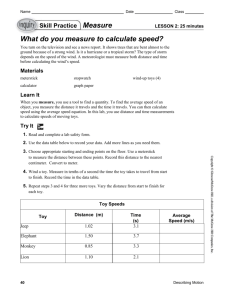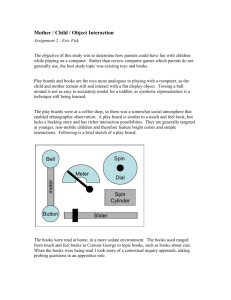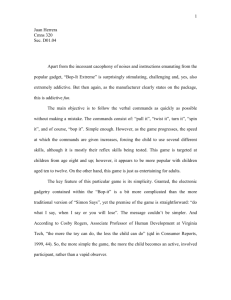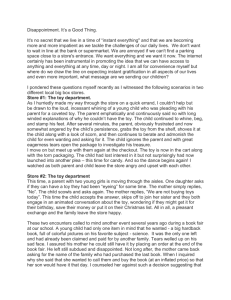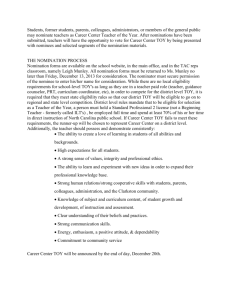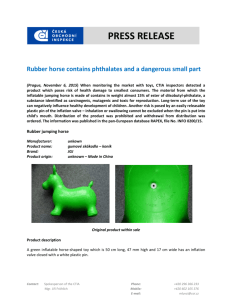1946 – First Commercial Microwave
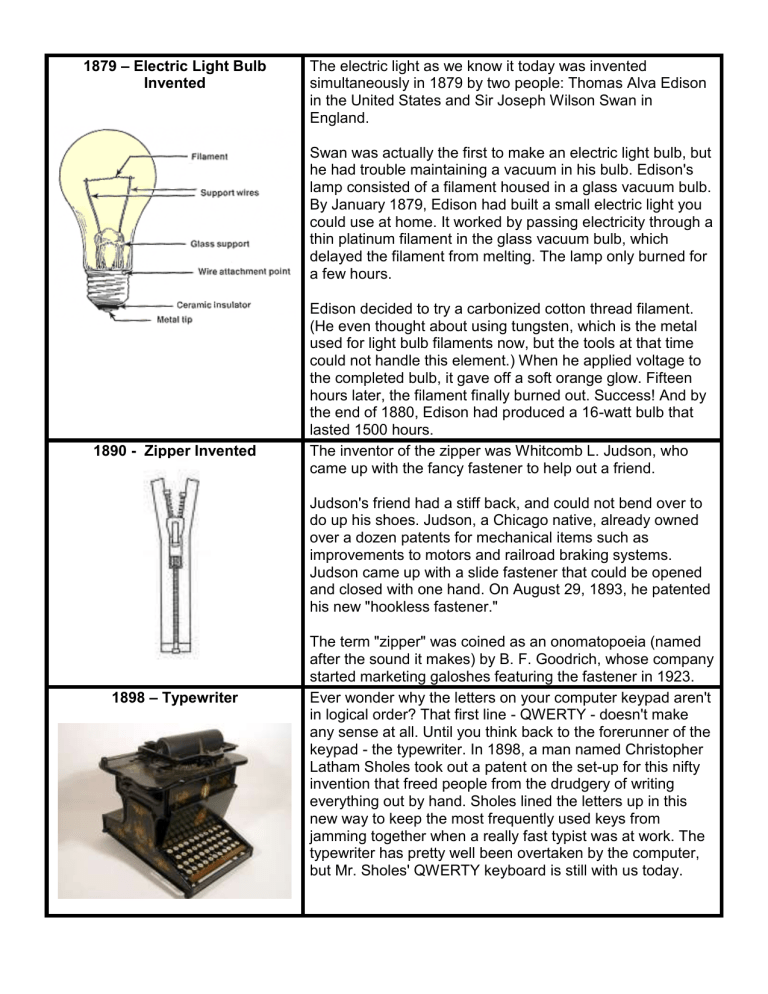
1879 – Electric Light Bulb
Invented
1890 - Zipper Invented
1898 – Typewriter
The electric light as we know it today was invented simultaneously in 1879 by two people: Thomas Alva Edison in the United States and Sir Joseph Wilson Swan in
England.
Swan was actually the first to make an electric light bulb, but he had trouble maintaining a vacuum in his bulb. Edison's lamp consisted of a filament housed in a glass vacuum bulb.
By January 1879, Edison had built a small electric light you could use at home. It worked by passing electricity through a thin platinum filament in the glass vacuum bulb, which delayed the filament from melting. The lamp only burned for a few hours.
Edison decided to try a carbonized cotton thread filament.
(He even thought about using tungsten, which is the metal used for light bulb filaments now, but the tools at that time could not handle this element.) When he applied voltage to the completed bulb, it gave off a soft orange glow. Fifteen hours later, the filament finally burned out. Success! And by the end of 1880, Edison had produced a 16-watt bulb that lasted 1500 hours.
The inventor of the zipper was Whitcomb L. Judson, who came up with the fancy fastener to help out a friend.
Judson's friend had a stiff back, and could not bend over to do up his shoes. Judson, a Chicago native, already owned over a dozen patents for mechanical items such as improvements to motors and railroad braking systems.
Judson came up with a slide fastener that could be opened and closed with one hand. On August 29, 1893, he patented his new "hookless fastener."
The term "zipper" was coined as an onomatopoeia (named after the sound it makes) by B. F. Goodrich, whose company started marketing galoshes featuring the fastener in 1923.
Ever wonder why the letters on your computer keypad aren't in logical order? That first line - QWERTY - doesn't make any sense at all. Until you think back to the forerunner of the keypad - the typewriter. In 1898, a man named Christopher
Latham Sholes took out a patent on the set-up for this nifty invention that freed people from the drudgery of writing everything out by hand. Sholes lined the letters up in this new way to keep the most frequently used keys from jamming together when a really fast typist was at work. The typewriter has pretty well been overtaken by the computer, but Mr. Sholes' QWERTY keyboard is still with us today.
1898 – Flashlight Invented The O.T. Bugg Friendly Beacon Electric Candle sold by the
United States Battery Company.
Patented November 15, 1898.
It is 8 inches tall and took 2 "D" cells which were contained in the upright tube. This early brass flashlight was turned on by screwing down the pointy thing on the top (to use the technical term.)
1902 - Teddy Bear Invented
1903 – Crayons invented
In America, toy bears begin to be called Teddy Bears" after President Theodore Roosevelt. In only a few years,
Teddy Bear-mania swept the world, and by 1915 largescale toy bear manufacturing was in full swing.
Edwin Binney and C. Harold Smith produce the first box of
Crayola crayons.
1903 – Wright Brothers Take Flight The first powered flight lasted only 57 seconds, but opened the door to passenger flights, jet planes, even space flights.
1908
1911
– Model T Car Introduced
– Home
Refrigerators released
It was in 1908 that Henry Ford started his assembly-line style of production and introduced the Model T, a car that was relatively inexpensive, versatile, and easy to maintain. He is credited with revolutionizing the automobile. The
Model T made cars accessible to the average person
– not just the fabulously rich. By the late 1920s the car was commonplace in industrialized nations.
In 1911 General Electric released a home refrigerator invented by a
French monk. This model used compressors that were driven by long belts attached to motors in the basement or in a neighbouring room. The dial in the back of the fridge that controls temperature was added in 1918. A typical fridge at that time looked like a wooden cabinet with a water-cooled compressor. Later, more stylish steel and porcelain cabinets replaced the wooden ones. Freezers with ice cube trays were added on top. Automatic ice makers started churning out ice in the 1950s and 60s.
Now, the fridge is one of the most common home appliances. It's found in 99.5 per cent of North American homes!
1912
1921
– Lifesavers Invented
– Insulin Discovered
In 1912, chocolate manufacturer Clarence Crane
(Cleveland, Ohio ) invented Life Savers as a “summer candy” that could withstand heat better than chocolate. Since the mints looked like miniature life preservers, he called them
Life Savers. After registering the trademark, Crane sold the rights to the peppermint candy to Edward Noble for $2,900.
Noble created tin-foil wrappers to keep the mints fresh, instead of cardboard rolls. Pep-O-Mint was the first Life
Saver flavor. Since then, many different flavors of Life
Savers have been produced. The five-flavor roll first appeared in 1935.
Canadian Dr. Frederick Banting, with Charles Best and
J.J.R. Macleod, isolated insulin, the substance secreted by the pancreas that allows the body to metabolize sugars.Since then, insulin has allowed millions of diabetics around the world to lead healthy, active lives.
1928 – Mickey Mouse is Created
1928 The Mickey Mouse character is created by Walt
Disney. Two years later, Charlotte Clark began making stuffed Mickey Mouse dolls, and Disney's legendary merchandising was born.
1929
– YoYo Becomes Popular 1929 The yo-yo is popularized in the United States after entrepreneur Donald Duncan sees the toy being demonstrated in
Los Angeles. Duncan bought a small yo-yo company for $25,000 and 30 years later sales of Duncan yo-yos reach $25 million dollars.
1929
– Penicillin Discovered Maybe you shouldn't wash your dishes before going on holiday. It could make you famous. That's what happened to
Dr. Alexander Fleming, a bacteriologist from England.
In 1928, Fleming was studying staphylococcus, a bacteria that causes pus formation. He left a pile of plates containing this bacteria on the end of his lab bench while he went on holiday.
After frolicking in the sun, he returned to find that mould had grown on some of his plates. You know - that stuff you discover growing on the dishes you left lying under your bed!
Fleming dumped the plates into a sink of disinfectant. Luckily for him, and for us, he forgot to put one of the plates in. This small oversight led to a huge scientific discovery. Dr. Fleming became intrigued with this dirty plate. Something spectacular was happening on it. Where the mould was growing, his staphylococcus bacteria was not. Somehow the mould stopped the bacteria from growing. Fleming thought that maybe that could stop bacteria from growing inside humans, too! This was a very big deal at the time because bacterial infections like meningitis, tuberculosis, and diphtheria caused many deaths. Through experiments, Fleming went on to show that extracts of this mould would inhibit the growth of many different types of bacteria, not just staphylococcus. He called this magic extract "mould juice".
In 1929, the mould was finally identified as "Penicillium," so
Fleming stopped calling his extract "mould juice" and renamed it penicillin, as it is still known today.
1935
– Monolopy Game Introduced 1935 Parker Brothers introduces Monopoly. By offering a way to
"get rich quick" to Americans struggling through the Great
Depression, Monopoly quickly becomes a bestseller, eventually attracting more than 480 million players all over the world.
1938
– Ball Point Pen Invented
1943 – Slinky Invented
1946 – First Commercial Microwave
Invention of a ballpoint pen by two
Hungarian inventors, Laszlo Biro and
George Biro. The brothers both worked on the pen and applied for patents in 1938 and 1940. The press hailed the success of this writing tool because it could write for a year without refilling.
While searching for a suspension device to ease rough sailing on battleships, navy engineer Richard James discovers that a torsion spring will "walk" end over end when knocked over. James brought the discovery home to his wife, who named the new toy "Slinky". If stretched end to end, the Slinky toys sold since 1945 would wrap around the world 126 times. Despite their enormous success, Slinkys are still made in Hollidaysburg, Pennsylvania, on the same eight machines that James began with over 50 years ago.
Nearly 6 Feet Tall, Weighing 750 Pounds
Engineers went to work on Spencer
’s hot new idea, developing and refining it for practical use. By late 1946, the Raytheon
Company had filed a patent proposing that microwaves be used to cook food. An oven that heated food using microwave energy was then placed in a Boston restaurant for testing. At last, in 1947, the first commercial microwave oven hit the market. These primitive units where gigantic and enormously expensive, standing 5 ½ feet tall, weighing over 750 pounds, and costing about $5000 each.
The magnetron tube had to be watercooled, so plumbing installations were also required. Initial Reactions Were
Unfavorable
1947: RCA's First Rear Projection Television
1947
– Tonka Trucks Introduced
1948
– Flyin’ Saucers (Frisbees) Introduced
RCA introduced the rear projection 648PTK television in 1947 to overcome the small size of CRT's at that time. This set had a "giant"
15 by 20 inch rectangular screen.
1947 When a group of Minnesota teachers realize their attempt to make and sell garden tools is failing, they decide to use their extra materials to make toys. They named the toy trucks they create Tonka trucks, after nearby Lake Minnetonka. Fifty years later, they had sold 30 million of the miniature vehicles, and used up 120,000 gallons of paint on their signature yellow dump trucks.
During the Great Depression people had to find ways to have fun that didn't cost a lot of money. When kids discovered that metal pie plates flew well, tossing them became a popular pastime.
Although it was great fun, pie plate tossing was not without its hazards. The plates made an unpleasant noise when they flew, and hurt your hands if you didn't catch them just right. Also, if the pie plates crash landed, they could shatter, or develop dangerously sharp edges. In 1948, Walter Frederick Morrison and
Warren Franscioni got the idea to make the flying plates out of plastic. They called them "Flyin' Saucers" to cash in on the UFO craze that was just beginning in
North America. The plastic version flew further and straighter than its metal prototype.
In 1955, Wham-O, the makers of the Hula- Spud Melin, one of Wham-O's owners, saw people tossing plates at
Yale University and yelling "frisbie" to warn bystanders.
The word came from the Frisbie Pie Company in
Bridgeport, Connecticut. The Frisbie Pie Company supplied pies -- and pie plates – to many of the New
England colleges. Melin liked the sound of students' warning, and renamed his toy the Frisbee®.
1949
– Lego Created
1951: Whirlwind Computer - The First to
Display Real Time Video
1959 – Barbie is Introduced
Ole Christiansen , a Danish toy maker, begins to manufacture toy blocks with a new twist.
Christiansen creates a plastic brick that can be locked together in different configurations. The
Lego, named from the Danish leg godt, meaning
"play well," was born. The continuing popularity of the Lego brick probably stems from its ability to stimulate a child's imagination--just six bricks fit together in 102,981,500 different ways .
The Barbie doll is introduced at the American
Toy Fair in New York City by Elliot Handler, founder of Mattel Toys, and his wife, Ruth. The blond doll--named after the Handlers' young daughter, Barbara--became one of the bestknown icons of postwar American popular culture.
1961 – Record Player
1967
– First Countertop Microwave Oven
1972
– First Video Game Introduced –
“Odyssey”
The first microwave oven designed for home use was a 24-inch built-in oven, produced by the
Tappan Stove Company around 1955. At
$1295, they were considered a luxury and sales were moderate. In 1967, Amana introduced the first domestic countertop microwave oven.
Priced at just under $500, the 115 volt
"Radarange" was smaller, more reliable, and more affordable than it's predecessors.
Microwave cooking had arrived and microwave ovens would soon become a standard fixture and in home kitchens.
Magnavox introduces Odyssey, the first video game machine, featuring a primitive form of paddle ball. Other companies soon invested in the video game business and, by 1976 hockey, tennis, and squash were available.
1975 – Commador Computer
1980 - Rubik’s Cube Introduced
1980 t – CD’s introduced
The PET was the beginning of a line of low cost
Commodore computers which brought computing to the masses. Like the Apple II, the
PET ran on the MOS 6502, but the PET cost only $795, which made it almost half the price of the Apple II. It included 4 Kb of RAM, monochrome graphics, and used an audio cassette drive for data storage. It also included a version of BASIC in ROM. The keyboard, cassette drive and small monochrome display all fit within the same trapezoidal one piece unit.
Ideal Toys renames their Magic Cube toy
Rubik's Cube after its inventor, Hungarian sculptor and architecture professor Erno Rubik.
The multi-colored cube is now said to be the world's best-selling toy, and there have been some 300 million Rubik's Cubes (or imitations) sold worldwide.
Philips joined forces with Sony Corporation o sc players in Japan, with the slightly exaggerated claim "Perfect sound, forever." By 1983 they were catching on in Europe and North America, and by the end of the decade they were outselling vinyl recordings.
1981 – Space Shuttle Launched
1983 – First Cell Phone
1985 – Cabbage Patch Kids Introduced
The first space shuttle was launched on April
12, 1981. The first flight lasted 54 hours and 21 minutes. The shuttle was the first manned spacecraft designed to be re-usable. NASA - the
National Aeronautics and Space Administration in the United States - planned the space shuttle as part of the push to establish a permanent manned space station, but budget cutbacks forced the agency to send up a smaller craft with a less ambitious set of goals. Even so, the first shuttle, The Columbia, weighs two million kilograms at takeoff!
Introduced in 1983, this Motorola DynaTAC cost
$3,995 and weighed two pounds.
Artist Xavier Roberts introduces his Cabbage Patch
Kids into the mass market. Roberts first designed the dolls in 1977 to help pay his way through school.
Cabbage Patch Kids became the most successful new dolls in the history of the toy industry. Although more than three million of the dolls were produced, supply could not keep up with demand, and doll sales for all of
1985 totaled $600 million (or more than $1.1 billion in
2005 dollars).
1993
– Beanie Babies Introduced
2001
– i-Pods introduced
Toy inventor H. Ty Warner begins to market understuffed plush bean bag toys called Beanie
Babies. The toys are designed to be inexpensive so that a child could purchase them. Warner began with nine Beanie Babies (a dog, a platypus, a moose, a bear, a dolphin, a frog, a lobster, a whale, and a pig).
The toys were not an instant success. It was only after the first eleven Beanie Babies were retired in 1996 that they became a collector's item. -- An estimated 100 million Beanie Babies are sold in 1996 alone.
2006 – Wii
2006 – youtube
Like most devices of this type, the Wii didn't appear "all at once" on a given date. The concept for the Nintendo Wii surfaced in 2001. It was not until 2003 that a big development team was assembled, and by 2005 the controller interface was up and running. Later that year the unit appeared at the Tokyo Game
Show. It finally rolled out on 14
September 2006.
YouTube was invented by Steve Chen,
Chad Hurley and Jawed Karim out of a garage in Menlo Park. The inventors became millionaires when they sold their invention for 1.65 billion dollars to the search engine Google.
According to their fact sheet,
YouTube was founded in February
2005, as a destination to watch and share original videos worldwide through the Web. Users can upload and share video clips on www.YouTube.com and YouTube enables video embedding that allows
YouTube videos to be placed on non-
YouTube pages.
2008 – iphone


